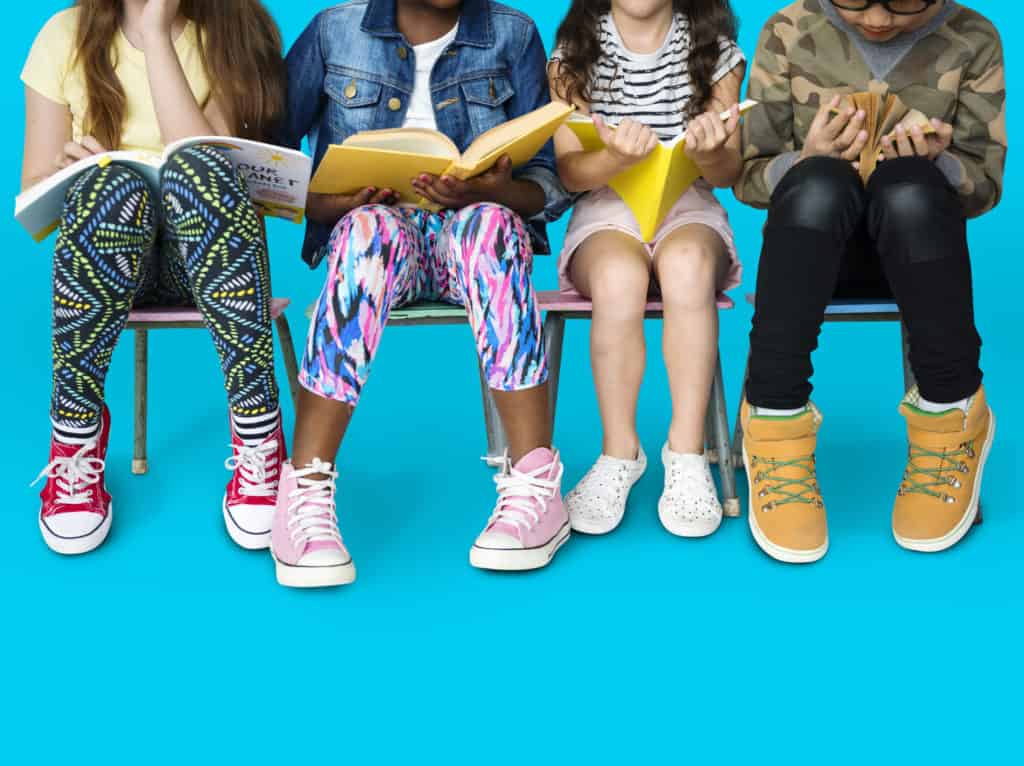I get asked this question in the clinic time and time again. Generally, the answer is ‘no’, however ‘hand-me-downs’ or ups or across can be absolutely fine. Measuring the child’s feet is the best starting point for sourcing shoes, as they will need to be of the correct length and width. It’s also important to check that the shoes are of an appropriate style and in good condition, not well-worn or with excessive wear on the inside or on the soles.
Children’s feet are continuously growing and susceptible to damage if they wear ill-fitting shoes. If a shoe does not fit correctly, it can cause foot pain, blisters, damaged nails and foot deformity.
Children’s feet can be a bit of a nightmare; sometimes they don’t grow for a while and then suddenly they seem to grow several sizes overnight! To keep up with growth spurts, have your child’s feet measured regularly and at least every three months.
Parents can often feel pressured into buying fashionable shoes for their children such as ballet pump styles, jelly shoes, high heels or flip flops. We would suggest that children wear high-fashion shoes only on a ‘little and often’ basis and, if children want to wear high heels, then choose the lowest possible height.
Shoes need to be a good fit and the price of a pair of shoes is not relevant, although the more expensive shoes are usually associated with trusted brands and likely to be more durable. The style of shoe should also be relevant to the purpose for which they are required, i.e. wearing football boots or ballet shoes. Most children today spend more time in trainers than in any other type of shoe and it’s just as important that trainers fit well too.
Top tips for choosing the right shoe for your child
• The toe area of the shoe should be wide enough for toes to be able to wriggle. The toe box of the shoe also needs to be the same shape and width as the child’s feet to avoid toe nail problems such as ingrown toe nails.
• The soles of the shoes should ideally have shock-absorbing properties. Rubber or polyurethane soles are the most slip resistant.
• A stiffened heel at the back of the shoe – to stop your child’s heels from slipping out of their shoes when walking or running.,/p>
• A wide heel base – to help prevent claw toes. A shoe which slips at the back will cause the toes to claw to keep the shoes on. A wide heel base also helps to give the foot stability and can help to avoid sprained ankles.
• The upper part of the shoe should ideally be made of leather or Gore-Tex, as this is breathable and waterproof. Plastic, nylon and rubber uppers can cause the foot to sweat excessively and increase the likelihood of athlete’s foot or verrucae.
• To ensure the shoe is supportive and adjustable, shoes should have laces, buckled straps or Velcro fastenings.
• The shoe liner needs to be cushioned and breathable for optimum comfort.
How can you check that shoes fit properly?
When trying on shoes, you should check the following:
• There are no gaps around the heel counter or tongue of the shoe
• There is ‘growing room’ in the toe area
• The widest part of the shoe is at the widest part of the foot
• There is no slipping at the heel when your child is walking
And ask your child if the shoe is rubbing their feet.
Ultimately, the shoe needs to be wide enough and sufficiently deep, with support. If you have any concerns about paediatric foot pain or any existing deformity, please seek expert advice from your podiatrist.









